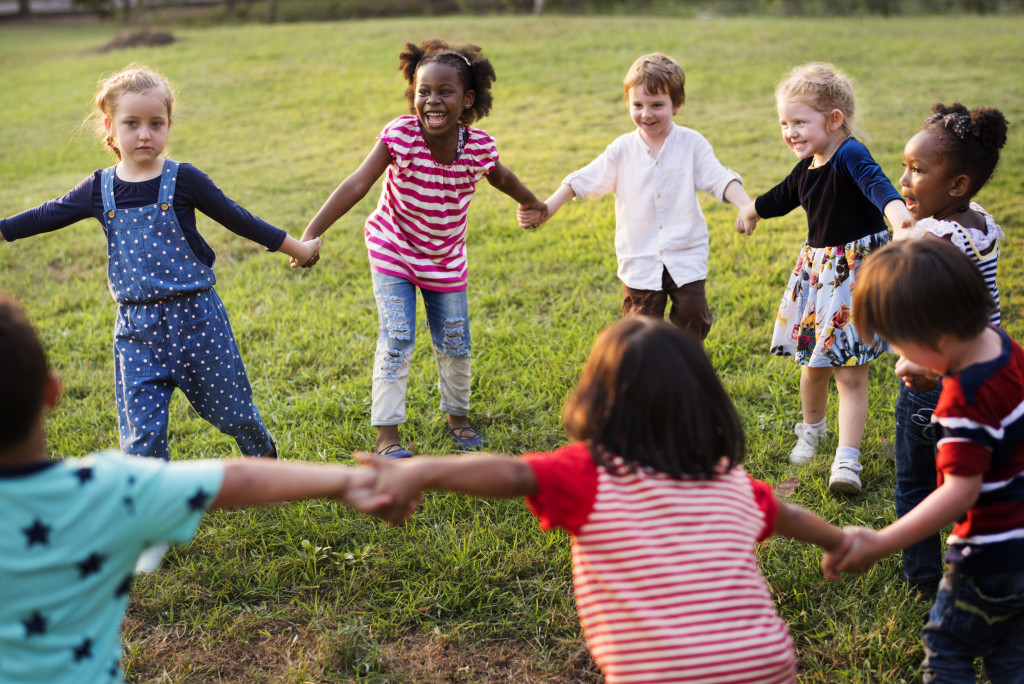Remember those cheerful evenings when you were a kid, and you used to go outside to play? You seemed to have an inexhaustible supply of time for excursions and discovery. However, do you recall how much difficulty you got yourself into?
For the most part, getting into trouble is an unavoidable part of growing up. For instance, children can injure their teeth while playing, resulting in crooked teeth. Luckily, they can be easily treated by a dentist with the help of digital aligners for orthodontics. Still, it’s critical to emphasize the significance of safety to your children, particularly when they’re outside.
Before you allow your kids out in the sun, sit down with them and go over some safety tips for their next outing.
Children Should Be Under the Supervision of an Adult
This is especially crucial now when many families work and teach from home and still manage other tasks like laundry, cooking, and more. Designate an adult to oversee the children both indoors and outside, even at your pool.
It is crucial to keep an eye on your kids while they’re having fun. Make sure your kids are aware of the concept of “stranger danger.” You don’t have to fear or terrify your children, but educating them how to react to strangers will provide serenity to both them and you.
Safety on the Playground
Safeguarding the playground area necessitates careful planning and supervision. Remember that newborns and toddlers (ages 0 to 2), preschoolers (ages 3 to 5), and school-aged children (ages 5 to 12) have different developmental requirements and abilities, as well as different developmental needs and abilities.
To keep playgrounds safe and enjoyable for everyone, various age groups may require distinct playground equipment in areas divided by fencing. Inspect the surface and playground equipment for broken, worn, or missing parts regularly. Remove, fix, or replace objects as soon as possible.
Keep It Clean and Safe
Children’s outdoor safety can begin with an examination of the environment in which they will be playing. Take a trip around your home and search for potential hazards for children. Pick up any rocks, branches, broken glass, or other debris that may have fallen into the yard.
Any garbage should be placed in a heavy-duty trash bag. Keep an eye on the house and yard for any bug infestations. Remove any wasp nests or beehives with a suitable insecticide.
Choose the Right Footwear

Proper footwear is an essential aspect of ensuring your children’s safety while playing outside. This could indicate that while you’re out on the trails, you should make sure you’re wearing trail-appropriate footwear.
If it’s winter, make sure you’re wearing winter boots to keep you from sliding and falling, and if it’s summer, stay away from open-toe flip-flops and sandals.
While your child may seem beautiful in this summer clothing on the playground, their apparel could be a hazard, especially when other children are running around. Furthermore, wearing open-toe shoes outside could endanger your toes and feet if an object falls directly on them.
Keep an Eye Out for Climbing Dangers
Even if your deck complies with current building requirements, it could still be dangerous to your child. Little climbers may find it easier to climb if your railing has decorative cut-outs or motifs. Also, especially with high decks, make sure all furniture and planters are set far away from the edge of the deck.
Because young children may move seats, supervision is still necessary. If you’re building a new deck, consider a new railing, a railing guard, or plan ahead–not all contractors will consider child safety when designing decks.
Maintain a Safe Swimming Environment
Because many children’s favorite places to be in the summer are the beach and the pool, water safety should be a top priority when considering outdoor safety for children. Adult supervision is the most critical requirement for keeping youngsters safe around your pool.
When children are playing in or near water, keep an eye on them at all times. Install fences at least four feet tall around the entire pool to keep your children safe; all gates should be self-closing and self-latching. When the pool is not in use, cover it. Also, maintain rescue equipment near the pool at all times.
When it comes to protecting your children, it’s better to be overprepared than underprepared. While you may not be able to prevent all unpleasant things from happening, you can ensure that you are appropriately prepared when they do. Being overprepared could be the difference between life and death, as well as a medical emergency that you didn’t sign up for.

